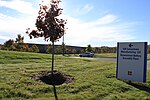GMC is a division of the American automobile manufacturer General Motors (GM) that primarily focuses on trucks and utility vehicles. GMC currently makes SUVs, pickup trucks, vans, and light-duty trucks. In the past, GMC also produced fire trucks, ambulances, heavy-duty trucks, military vehicles, motorhomes, transit buses, and medium duty trucks.

Fisher Body was an automobile coachbuilder founded by the Fisher brothers in 1908 in Detroit, Michigan. A division of General Motors for many years, in 1984 it was dissolved to form other General Motors divisions. Fisher & Company continues to use the name. The name and its iconic "Body by Fisher" logo were well known to the public, as General Motors vehicles displayed a "Body by Fisher" emblem on their door sill plates until the mid-1990s.
Baltimore Assembly was a General Motors factory in Baltimore, Maryland. The plant opened in 1935 to produce Chevrolets and closed on May 13, 2005. It was a two-level plant located in the Canton Industrial Center to the east of the Inner Harbor, to the west of Dundalk, and south of Brewers Hill in Baltimore.
Arlington Assembly is a General Motors automobile factory located in Arlington, Texas. The plant has operated for more than 60 years and today manufactures large SUVs from GM's divisions Chevrolet, GMC and Cadillac.
Flint Assembly is an automobile factory operated by General Motors in Flint, Michigan. It is the city's only main plant after the closure of Buick City. As of 2022, the Flint factory currently produces full-size pickup trucks. Engine block and cylinder heads were cast at Saginaw Metal Casting Operations, internal engine components were created at Bay City Powertrain and the engines were then assembled at Tonawanda Engine and Romulus Engine. For most of the 20th century Flint Assembly was the home factory for all Chevrolet vehicles.

Fremont Assembly was a General Motors automobile factory in Fremont, California in the San Francisco area, replacing the older Oakland Assembly. Groundbreaking for the plant occurred in September 1961, and the plant produced its first vehicle on May 1, 1963. Production continued through March 1, 1982, when the plant was closed after production problems. After closure, the plant was refurbished and reopened as the more successful NUMMI joint-venture between GM and Toyota between 1984 and 2010, and later became the Tesla Factory in 2010.
Detroit/Hamtramck Assembly, also called Factory Zero, is a General Motors automobile assembly plant straddling the border between Detroit and Hamtramck, Michigan. It is located about three miles (five km) from GM's corporate headquarters. When the facility opened, it was built on the original "Dodge Factory" location that was built in 1911, which was closed in 1980 and demolished in 1981, and the new GM factory built vehicles for GM's "BOC" (Buick/Oldsmobile/Cadillac) Group. The first vehicle, a Cadillac Eldorado, rolled off the assembly line on February 4, 1985.
Pontiac East Assembly was a General Motors manufacturing facility located in Pontiac, Michigan. The manufacturing complex at 2100 South Opdyke Road occupied a rectangular 162-acre site directly east of the GM Pontiac Centerpoint Complex. Hourly workers were represented by UAW Local 594.

Oshawa Assembly is a manufacturing facility in the city of Oshawa, Ontario, Canada, that built various automobiles for General Motors Canada. Vehicles were primarily produced for the US, Canadian, and Mexican markets, but they also built exports for various countries around the world, particularly South America and the Middle East. Historically the Oshawa plant was the source of all right-hand-drive market GM exports with complete vehicles or knock-down kits shipped to Australia, New Zealand, South Africa, and the United Kingdom until the end of the 1960s. At one time, the factory was one of the largest auto manufacturing facilities in the world, with two car assembly plants, a truck assembly plant, as well as parts production including Harrison radiators, AC Delco batteries and American Axle. Between 1999 and 2019, it had won more quality and productivity awards than any other GM plant. The plant is part of the larger GM Autoplex.
Spring Hill Manufacturing is a General Motors factory in Spring Hill, Tennessee. The plant currently includes vehicle assembly as well as powertrain, stamping and molding operations. The plant originally operated as the sole manufacturing facility for Saturn Corporation.
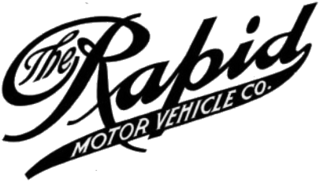
The Rapid Motor Vehicle Company was founded in 1902 in Pontiac, Michigan, by brothers Max (1874-1946) and Morris Grabowsky, whose earlier venture, Grabowsky Motor Company, had been founded in Detroit in 1900. They went on to build one-ton trucks and were the beginning of GMC Truck division after they were acquired by General Motors in 1909.
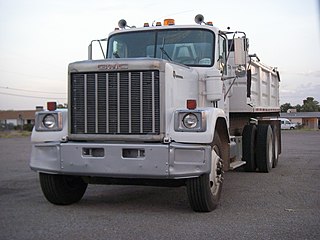
The GMC General is a heavy-duty truck that was assembled by the GMC Truck and Coach Division of General Motors from 1977 to 1987. The largest conventional-cab truck ever produced by the company, the product line replaced the C/M 90/9500 trucks.

The GMC Brigadier is a series of heavy-duty trucks that were assembled by the GMC Truck and Coach Division of General Motors. The second generation of the H/J-series heavy-duty conventionals, the Brigadier was produced from 1978 to 1989. Slotted between the largest medium-duty C/K trucks and the GMC General, the Brigadier was a Class 7-8 short-hood conventional similar to the Ford L-Series and Mack Model R. Configured in both straight truck and semi-tractor layouts, the Brigadier saw use in short-haul, vocational, and severe-service applications.

The GMC Astro is a heavy-duty cabover truck that was manufactured by the GMC Truck and Coach Division of General Motors from the 1969 to 1987 model years. Succeeding the F/D-series "Crackerbox" cabovers, the Astro was marketed by Chevrolet as the Titan, serving as the largest cabover trucks ever produced by General Motors.
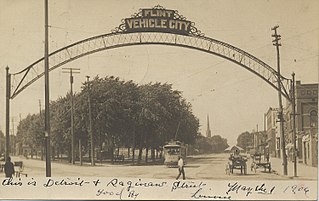
Flint, Michigan is a city which previously relied on its automotive industry, and still does to an extent. Over the past several decades, General Motors plants in Genesee County have experienced re-namings, management shifts, openings, closures, reopenings, and spinoffs.
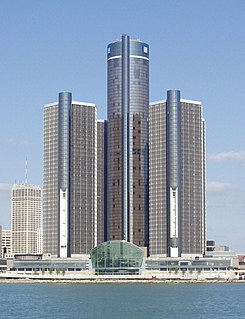
The history of General Motors (GM), one of the world's largest car and truck manufacturers, dates back more than a century and involves a vast scope of industrial activity around the world, mostly focused on motorized transportation and the engineering and manufacturing that make it possible. Founded in 1908 as a holding company in Flint, Michigan, as of 2012 it employed approximately 209,000 people around the world. With global headquarters at the Renaissance Center in Detroit, Michigan, United States, General Motors manufactures cars and trucks in 35 countries. In 2008, 8.35 million GM cars and trucks were sold globally under various brands. Current auto brands are Buick, Cadillac, Chevrolet, GMC, and Wuling. Former GM automotive brands include La Salle, McLaughlin, Oakland, Oldsmobile, Opel, Pontiac, Hummer, Saab, Saturn, Vauxhall, Daewoo and Holden.
Pontiac Assembly was one of four General Motors assembly plants in Pontiac, Michigan located along Baldwin Avenue. It served as the home factory for GM's Pontiac Motor Division since it was built in 1927. It was across the street from the currently operational Pontiac Metal Center, which was the original location for the Oakland Motor Car Company, which Pontiac evolved out of. It was also sometimes identified as being located in the city of Bloomfield, Michigan.

Revitalizing Auto Communities Environmental Response Trust ("RACER") Trust was created in March 2011 by a consent decree in the United States Bankruptcy Court for the Southern District of New York. RACER's mission is to clean up and position for redevelopment certain real properties owned by the former General Motors Corporation (“GMC”) and various GMC affiliates at the time of GMC's bankruptcy in 2009. Through its bankruptcy proceeding, GMC became known as Motors Liquidation Company ("MLC") and has since been effectively dissolved. Before its dissolution, MLC was carved into five separate trusts; the first to settle the claims of unsecured creditors ; the second (RACER) to manage, perform environmental activities at, and ultimately dispose of certain remaining MLC real and personal property assets; the third to manage asbestos-related claims ; the fourth for litigation claims ; and the fifth for general unresolved GMC matters.
Saginaw Metal Casting Operations is an automobile engine foundry plant in Saginaw, Michigan. Opened under GM management in 1919, the factory produces engine blocks and cylinder heads for General Motors vehicles. The factory currently occupies 1.9 million square feet on 490 acres. The location was originally the Marquette Motor Company until acquired by William Durant in 1909 when the car was discontinued in 1911. During World War I, it was used to manufacture mortar shells for the US Ordnance Corps, then was repurposed for engine block casting when operations at Northway Motor and Manufacturing Division ended in 1925. Historically in September 1927 it was known as the Chevrolet Grey Iron Foundry. In the past when it was called GM-Saginaw Product Company (SPC) a cloverleaf casting symbol mark was cast onto the iron component.











